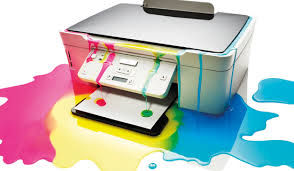What is Planned Obsolescence?
- by Georgina Reed
- Mar 15, 2018
- 2 min read

Over the last century many products have been purposely designed to fail – that’s right! The product has built-in obsolescence, so the consumer has to repurchase the item again and again.
From smartphones to motor vehicles, many products have a ‘use by’ date embedded inside even though the article could probably last a great deal longer than the manufacturer has specified.

One example is printer ink. Each print
cartridge now includes a chip which makes the cartridge redundant, once a certain date arrives. The cartridge will no longer work, no matter how much ink is left inside.
The seasonal creation of fashions and fads for clothing, toys & games, cars, computers, smart phones, etc. has already become an accepted cycle of “buy and throw away”. The trends in furniture and kitchen designs change rapidly and many people feel pressured to update to “keep up” with the latest.
This type of consumerism was first created in the US by the Manufacturers Union who hired maverick cowboy marketing gurus to create campaigns to convince people that they had to have the latest or be left behind.
Many products that have built-in premature failure are also purposely sold more cheaply than their robust counterparts in order to lure the gullible, uneducated, unsuspecting, but mostly apathetic buyer.

The consumer thinks they are getting a bargain but in reality they end up paying much more because of the time, effort and nuisance value of having to repurchase the item many times over. Not to mention the waste going into landfill that will take many centuries to breakdown causing who-knows- what future environmental hazards.
Because the consumer has become accustomed to paying less, they often reject a better-quality product which would have outlasted the cheaper one probably many times over. This is known as false economy.
What the buyer doesn’t realise or understand is that they have been systematically brainwashed - duped into believing the smart marketing ploys used by unscrupulous manufacturers who also use technology to collect data from your smart phone, credit cards and other means, so they now know what you want, what you drive, where you shop, how much you spend, and your other purchasing habits.

If consumers were prepared to pay a little extra for a quality product, they would save themselves the time and bother of having to replace the cheaper poor quality product. Additionally, the products with built-in obsolescence are unlikely to carry a guarantee or warranty and will probably end up in landfill.
Built-in obsolescence, together with the media urging (and relying on) artificially high consumption rates is not only destroying our economy and resources, it is poisoning our planet with mountains of unnecessary and environmentally devastating waste.

Rather than buying cheap office chairs made from inferior materials and mechanisms that are built to fail, consider purchasing quality, robust seating that will outlast the cheap and inferior alternatives by many years.
Don’t be hoodwinked into purchasing inferior seating, it is FALSE economy.
At ChairPro, the Chair Professionals, our ergonomic chairs are made locally, using quality, long wearing components and come with a five-year factory warranty plus after sales service!
To view our select range, visit our website
























Comments